I thought I'd take the opportunity with a recent storm, to explore how we're dealing with water run-off. Normally it would all just run down the slope as quickly as possible, until it reaches flat ground at our lowest gully. This creates soil erosion however, so over the many, many, many years, we've been digging a series of swales to direct how the water flows.
Click all images to enlarge
Forgive the weeds. Its autumn and we're slowly removing them and mulching the swales and plants with them. A season of natural equity goes back into the soil.
We have one swale on the top slope, directly above the house, which redirects water that comes from the street and our neighbours' driveway (above). But there's also a middle swale, which wraps around the immediate vicinity of the house. Any water which collects, gets moved slowly north. These middle swales, always fill relatively quickly and seem to drain within 24 hours.
Same middle swale
House, left, cross the swale to reach both chicken coops, right
We've built these over several growing seasons, and even used them as dumping grounds for prunings. As they break down, they fill any ruts we have in the soil, but also act as filters for the water which passes through. It's been wonderful at recycling our natural materials, with the bonus of slowing the flow.
As much as we try to capture and retain the water on level swales (dug on contour) it inevitably has to travel down a small slope, because, well, we live on slopes and that's the way gravity works.
From here, the water would normally launch on the north facing ski-ramp, and chew its way down the slope. But not since we've dug our newest swales. It's a slow process digging by hand, but the job inevitably gets done. Swale 1 is in the middle of construction, and swale 2 is yet to be started.
This picture doesn't really illustrate how long the swales are going to be, but shows the path the water is going to take nonetheless. Its going to travel twice down the slope, with strategic spillways in the swales, to move the water further down hill as they fill.
We already have a semi-mature mulberry tree to help take up some of that moisture and nutrient flow, but we also have a mango tree in the distance, out of shot. More on that in another post.
But now this is where it gets interesting...
Where does all this water lead, you may ask? Straight to the flattest ground, which happens to cut through the middle of our property. This is where all the water events, end up merging together. We get water from our own property meeting with water entering from our neighbours lands, which all deal with the water coming off the street above.
Its a network we're hoping to tap by slowing the flow - especially the velocity where the water enters from our neighbours land. They've built a concrete culvert to cross the gully to their house. The water sheds from the bitumen road quickly, enters several properties with no means to slow the flow, then it shoots like a bottleneck, through our neighbours concrete culvert.
The speed in which it enters is so forceful, it cuts a new path nearly every time. It digs deeper and deeper into the soil, creating chasms at least a metre deep on our neighbours side. Our only hope to stop that kind of erosion happening on our land, was to choke it out with natural materials - in this case, grass, weeds and what-have-you. We're somewhat chuffed you cannot see the enormous erosion channel that used to be here. Its been choked out with thriving grasses growing on old debris instead.
We had to slow the flow by using a similar strategy to the middle swale - by dumping old prunings and such into the channel. Not in all of it, mind you, just at strategic points so the water could spill over if there was too much. We don't burn our debris (not until we get a wood heater) but we tend to drown them instead. Aren't we lovely.
Mulberry tree #2
water flows to the left (mostly) but can also spill over to the right
A little further down stream, is a somewhat younger tree to our first mulberry, and its planted here to take advantage of the water and nutrient flow. We thought the first mulberry grew fast, but this one is on steroids. Its about half the age of our original tree but growing twice as fast.
What I have just shown you in these series of photos, has been many years in the making. We are still doing a lot of work, but nature is helping us too. With each monsoon season that passes through, more elemental forces help to shape our lower gully. We have a lot of gullies on our property, this just happens to be the biggest and with the most potential to tap, as land stewards.
There is so much work to do here, and God willing, we will finish it. The work is pretty simple though - dig, prune, dump and see what the monsoon season leaves behind.

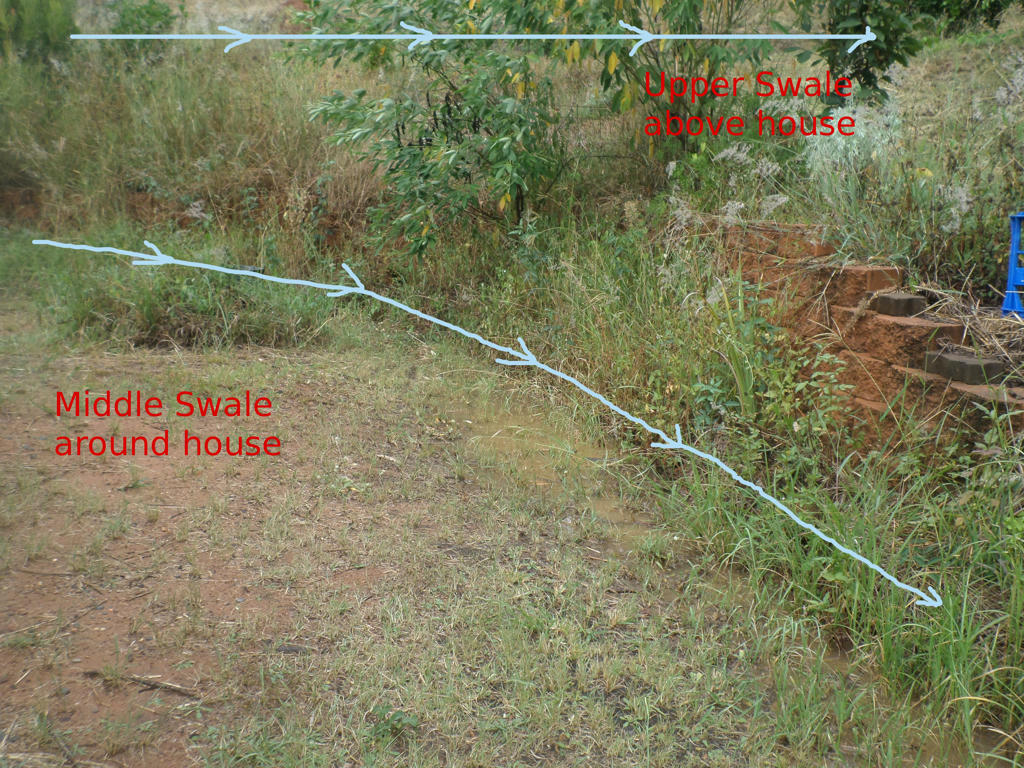
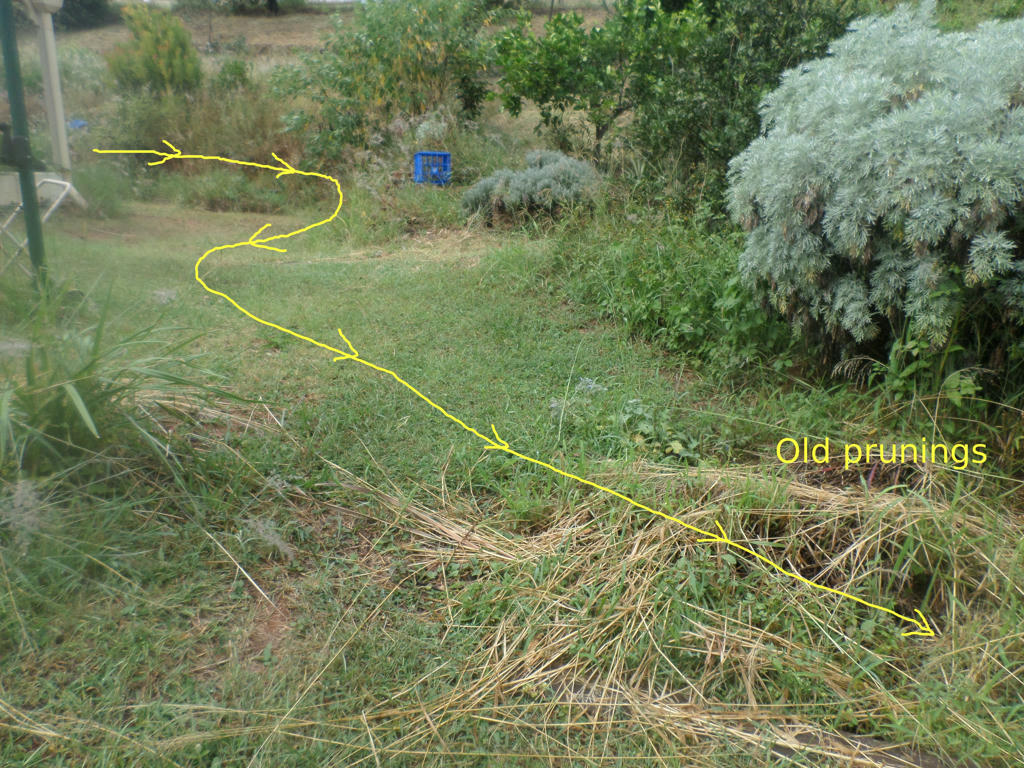
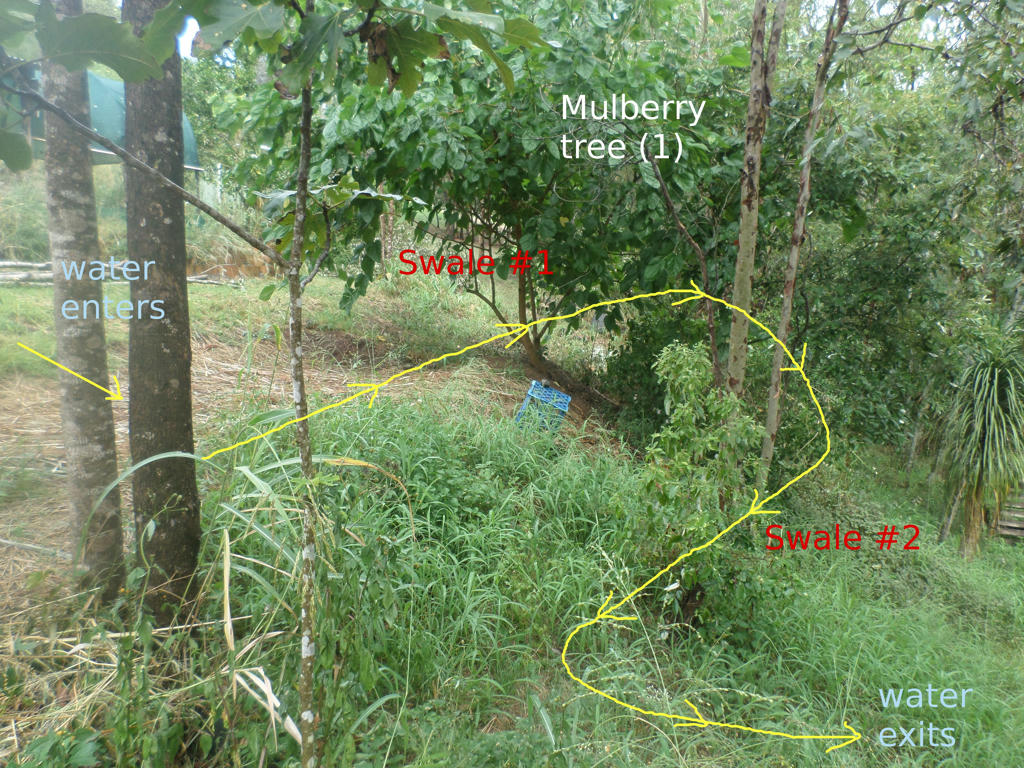
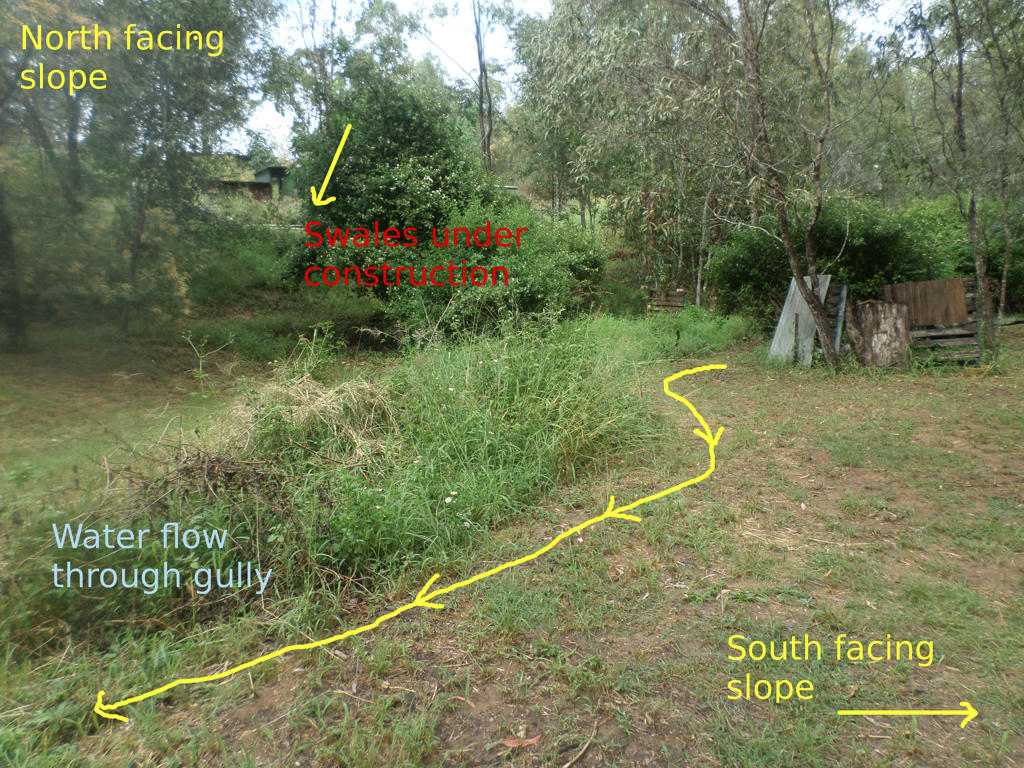
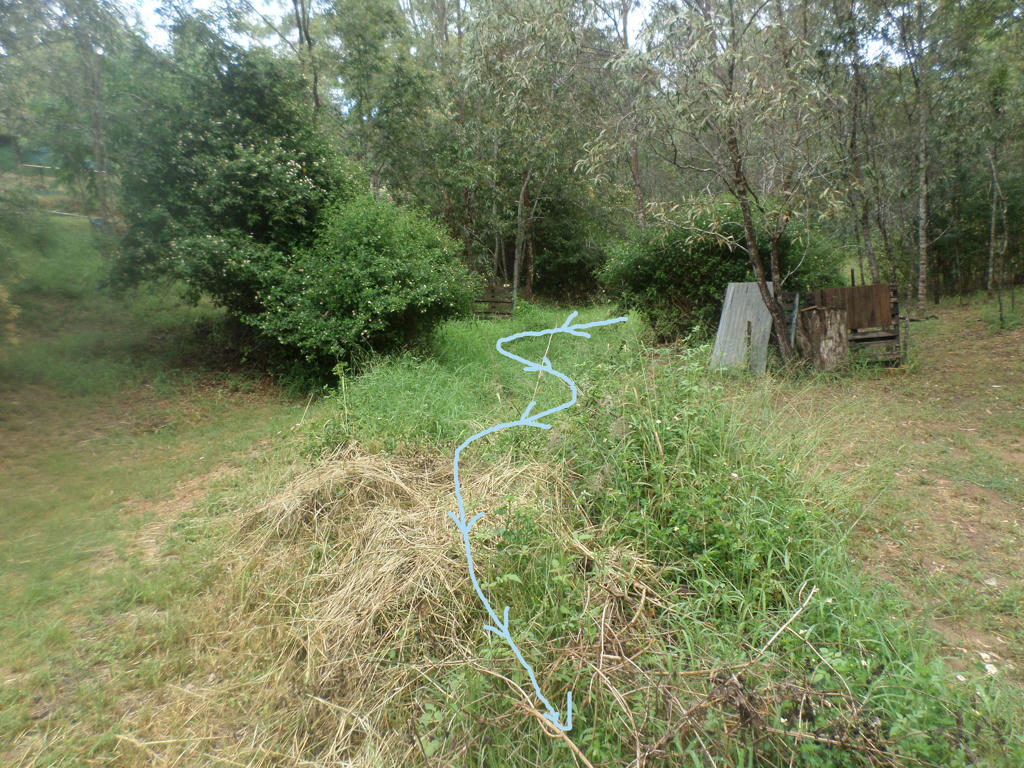
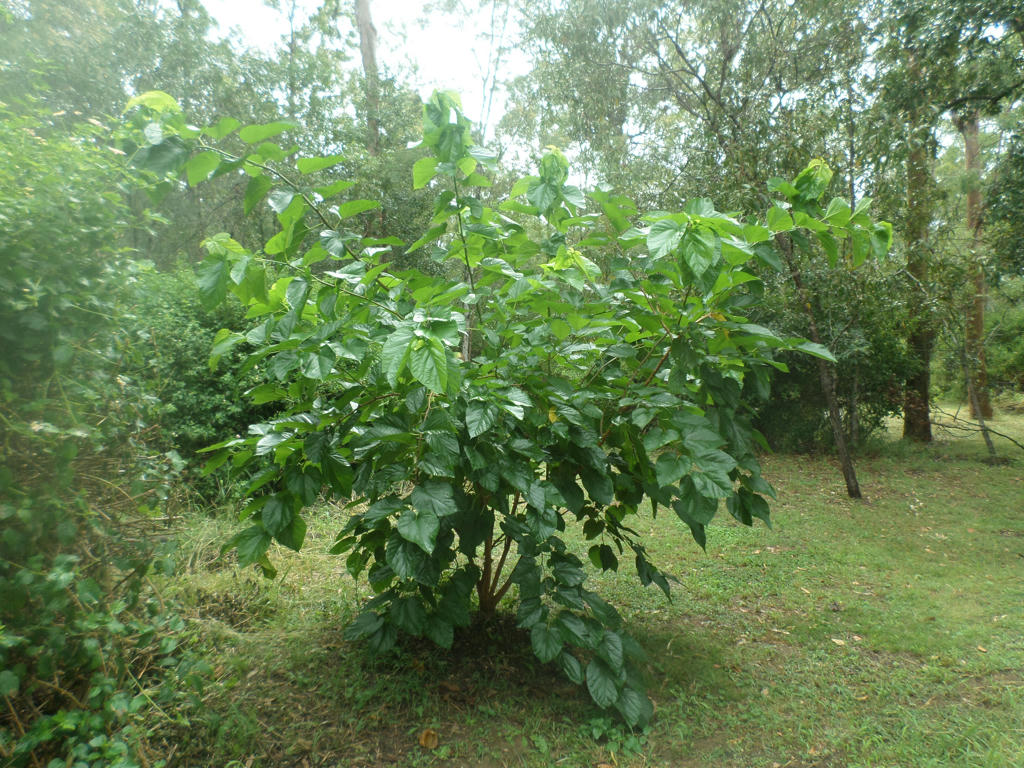
Very interesting. I was able to get a good look at the rainwater drainage flow on our property this winter when we had a lot of rain. That's really the only way to evaluate progress! I can't recall about your soil, though. Does it retain moisture well?
ReplyDeleteOur soils are a combination of clay, loam and sand, mostly due to the sandstone shelves which are dotted through the property. Some sections can swell and hold moisture that way (clay) or they can be held in topsoil which constantly needs renewed mulch every year, because we can leach a lot of water and nutrient through the sandstone shelves.
ReplyDeleteI've had to treat my soils like the tropics because all our rain comes in large deposits (mostly). The topsoil needs some sort of nutrient accumulator to stop everything leaching away too, in the form of grasses, weeds and some plants we put in deliberately, like bamboo, lemon grass, arrowroot, pelagonias, pigeon peas and other perennials. They get pruned in autumn so all those nutrients which may have leached away during storm season, get put back on the top soil.
If we don't do this, we get bald, unproductive patches where nothing seems to grow. So you could say the state of our soils are constantly in flux. They're in the process of being improved, by the continual, annual cycle of returning what does grow, back to the soil. People often freak at letting their weeds become mulch for the soil, but if we don't do it, we'd be spending a fortune on bringing in mulch from off site, or living with unproductive soils which erode quickly. I trust what grows here naturally, needs to grow, in order to improve the soils.
That lower gully, is still holding water, even once it disappears from the surface. Everything is held underground to avoid evaporation. Its the soil on the slopes we have the most problems with though. We need to get a nutrient cycle which can renew itself, without as much intervention as we're giving it now. Swales on contour is one part of that strategy, plants is the other. It will attract the native animals which feed here and leave their deposits of manure too. Its all about getting the nutrient back up the hill, so it can bring it all back down again. And so on. ;)
That's an excellent way of looking at weeds, LOL. Sounds like your soil situation is somewhat similar to ours. Excellent point about dynamic accumulators and preventing ground evaporation. Those are our focus as well, but as you say, it's a slow process. I do think it's worth the investment of bringing in nutrients and mulch materials. We figure our land is our retirement, so we put as much into it as we can.
DeleteYou're fortunate to have the animal assistance on the manure front, but other people simple want it gone from their operations, and will give it away to anyone who wants to come get it. We used to do this, until we found some grasses were getting in via the manure, and they were choking out our gardens But on the whole, getting inputs in, as long as they're cost effective, is like making a deposit in the fertility bank. That's a nice way to look at one's retirement. :)
DeleteYes, seeds in manure are a nuisance and we don't seem to be able to get them all "cooked" out in the decomposing process. I'm hoping that our moving the compost piles into the chicken yard a la Geoff Lawton will help. Chickens can eat grass seeds off their stalks so I'm hoping they'll help with them in the compost. This year will be telling in that department!
DeleteChickens are great at sorting through compost and their health seems the better for it too. I hope your compost sifters did the trick! Will be interesting to see.
Delete